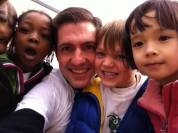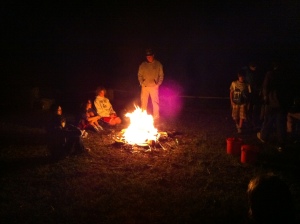In the 20th century, rigor in school was typically defined by the sheer volume of content that a student needed to master. Academic success was most often measured using traditional paper-and pencil exams, many of which were quickly and inexpensively scored by machines.
In the 21st century, independent schools are implementing a new rigor; one that is not defined exclusively by workload and is not easily measured using traditional assessments. The new rigor is a response to dramatic changes, made possible by technology, in how people live and work and learn.
Historically, the central purpose of schooling was to impart the “3r’s – reading, writing and ‘rithmetic”. This was an “information- accumulation” education; all other skills learned in school were considered to be secondary. However, Patrick Bassett, President of NAIS (the National Association of Independent Schools) suggests that a new century requires a new definition of purpose; one that recognizes the “six c’s”: creativity, character, critical thinking, communication, cosmopolitanism, and collaboration.
What does rigor look like in an independent school that is informed by the “six c’s?”
Scratch, Diigo, Scoop.it, and VoiceThread may be totally unfamiliar terms to most parents, but a visit to a Connecticut independent school would illustrate these and other integrated technologies that captivate students of all ages in dynamic and creative, individual and group assignments. These are tools used by classroom teachers to expand and enhance the learning of traditional academic subjects. They are less about convenience and more about increasing motivation and advancing innovation. Best of all, these digital devices offer students an opportunity to demonstrate learning in ways that replicate real world capacities and often have real world audiences. Written work that students formerly offered for one teacher’s review and response can now be posted on a personal blog or school website. Access can be password protected or open to the whole world (including grandparents!)
Understanding that the work of the world in the 21st century is increasingly done in teams, collaborative learning and project based learning now complement traditional learning in independent schools. On your visit, you can expect to see robust evidence of this: a writing workshop where students are critiquing each other’s drafts using Smartboard technology, a pre-school class collectively transforming a room full of cardboard boxes into a dragon for their Chinese New Year celebration, a group of perplexed 6th grade students who have been given an odd assortment of household supplies and assigned the task of constructing an effective water filter, a high school student with a passion for Chemistry Skyping with a professor at Duke University.
These are all examples of engaged students; students taking some measure of ownership of their learning. These are also examples of i-generation behaviors. The first generation to grow up surrounded by digital technology, the children and teens in school today are accustomed to learning on their own and learning from each other. Their shared learning experiences teach them how to be critical of other people’s ideas without being critical personally. Of Bassett’s six “c s, collaboration is the one that most actively advances the remaining 5.
Student engagement takes many forms, but it requires students to do more than merely listen and take notes. A project based program offers a liberated role for the teacher, allowing the teacher to serve as a resource and guide, steering the class toward essential questions that require students to think deeply, originally and creatively.
There is a new, emerging rigor in independent schools focused on preparing students for 21st century careers and citizenship. It is replacing correct answer education with an education for deeper understanding; requiring students to question their assumptions about the world, and learn new ways to demonstrate their knowledge. Students are assigned meaningful tasks and assured that their hard work will be meaningfully and critically assessed.
Rigor in today’s independent schools remains true to the classical (Oxford) definition of the term “the quality of being extremely thorough, exhaustive or accurate,” but it also contains the modern expectation that it will demonstrate evidence of creativity, character, critical thinking, communication, cosmopolitanism, and collaboration.
|
|




